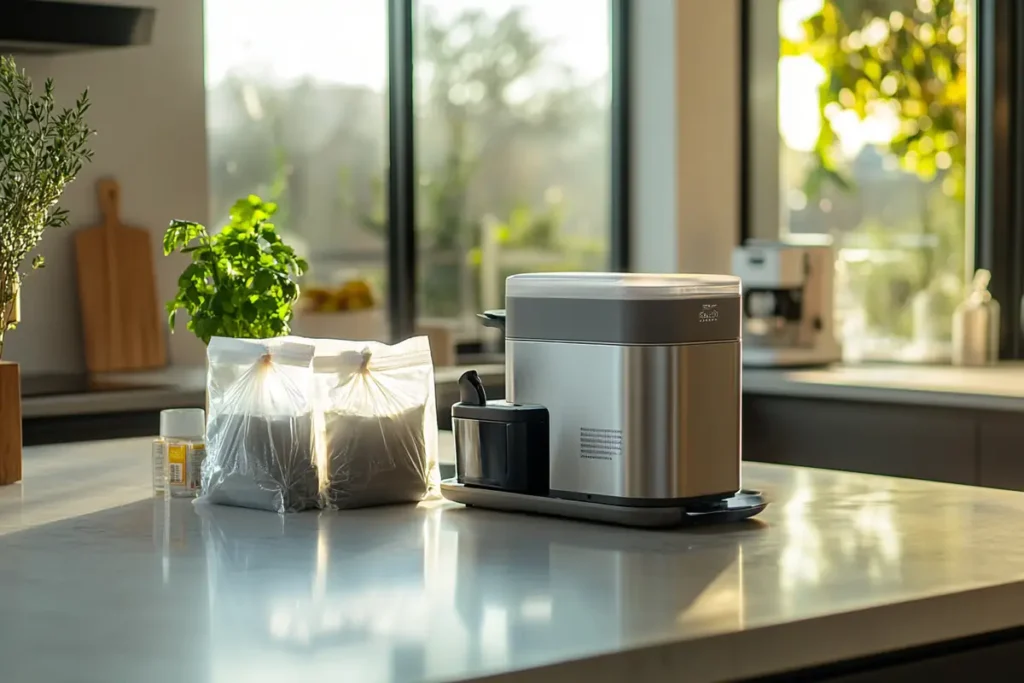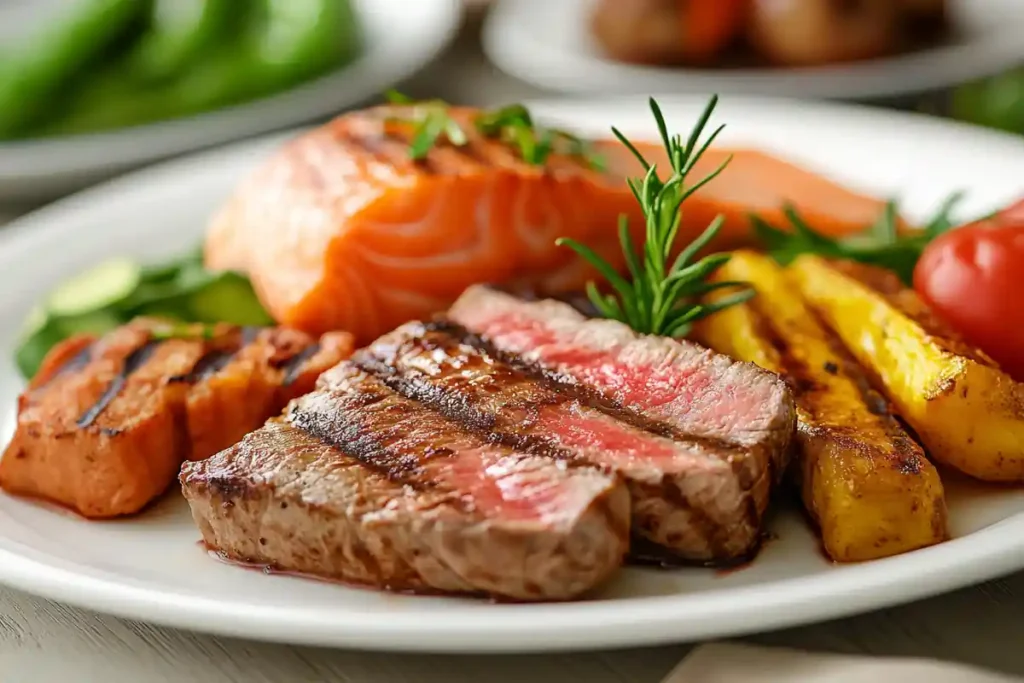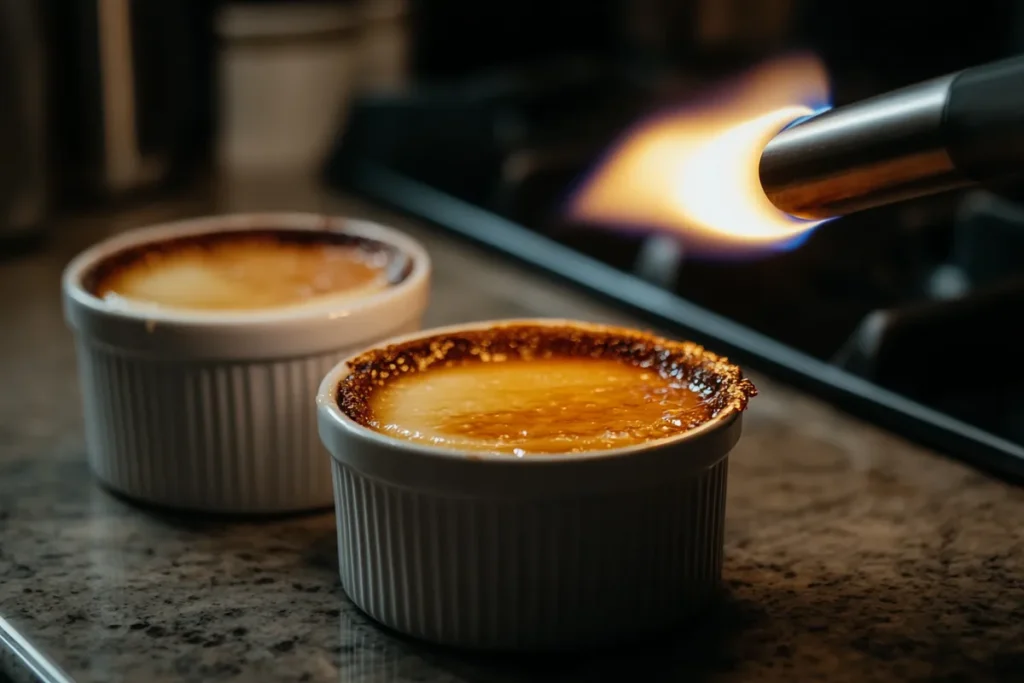Sous vide cooking requires precision and skill, combining modern technology with time-tested culinary practices to elevate every meal you prepare. You can use this method to achieve gourmet results, whether crafting tender steaks or creating delicate desserts. With each dish, sous vide enhances flavors, ensures perfect textures, and maintains the nutrients that other methods often sacrifice.
This guide walks you step-by-step through the essentials, explores popular recipes, and reveals advanced techniques for remarkable results. Moreover, it simplifies the process for home cooks while offering professional chefs new opportunities to refine their art. So, let’s explore the fascinating world of sous vide recipes, uncovering how you can transform everyday meals into extraordinary creations with ease.
Introduction to Sous Vide Cooking
What is Sous Vide Cooking?
Sous vide, a French term meaning “under vacuum,” is a cooking method that involves sealing food in an airtight bag and cooking it in a water bath at a precisely controlled, low temperature. It originated in French kitchens during the 1970s but has since become a global phenomenon.
This approach ensures that your food is evenly cooked from edge to edge, retaining moisture and nutrients. Unlike traditional cooking methods, where temperature control can be tricky, sous vide eliminates guesswork. It’s not just a technique; it’s a revelation for anyone aiming to achieve perfectly cooked meals.
Benefits of Sous Vide Cooking
Why choose sous vide over conventional methods? The answer lies in the unparalleled benefits:
- Unmatched Precision: With sous vide, you can control temperatures within a fraction of a degree, which is critical for delicate proteins like fish or custards.
- Enhanced Flavor: Cooking food in vacuum-sealed bags locks in natural juices and flavors, making every bite delightful.
- Nutritional Advantages: Traditional cooking can strip food of its nutrients, but sous vide preserves vitamins and minerals.
- Consistency: You’ll achieve restaurant-quality results every time, whether you’re preparing a simple chicken breast or an elaborate dessert.
Essential Equipment for Sous Vide

To embark on your sous vide journey, you’ll need a few basic tools. Here’s what you should stock up on:
- Immersion Circulators: These devices heat and circulate water at precise temperatures. Popular models include the Anova and Joule, both known for their accuracy and ease of use.
- Vacuum Sealers and Bags: Vacuum sealers are crucial for removing air and ensuring your food cooks evenly. If you don’t have one, zip-lock bags with the water displacement method can also work.
- Cooking Containers: A large pot or a dedicated sous vide container will hold the water and your food. Some setups include lids to minimize water evaporation.
- Racks and Clips: These keep your bags submerged and in place during the cooking process.
Getting Started with Sous Vide Recipes
Choosing the Right Ingredients
In sous vide cooking, ingredient quality matters—a lot. Because this technique enhances natural flavors, any imperfections in your ingredients will become more pronounced. But don’t worry; with a little guidance, you’ll know exactly what to look for.
Choose fresh cuts of meat like chicken breasts, salmon fillets, or ribeye steaks to achieve optimal results with sous vide cooking. For tougher cuts such as brisket or chuck roast, rely on sous vide’s slow, even cooking process to tenderize them to perfection, making them rich in flavor and texture.
Additionally, opt for fresh, in-season vegetables to ensure the best taste and consistency. Carrots, asparagus, and hearty root vegetables like potatoes shine when cooked sous vide, retaining their natural sweetness and vibrant colors.
Furthermore, enhance your dishes by adding herbs and aromatics. Ingredients like rosemary, thyme, garlic, or citrus zest infuse food with layers of incredible flavor while maintaining a fresh and balanced profile.
Ultimately, selecting high-quality ingredients serves as the foundation for crafting restaurant-quality sous vide recipes. With thoughtful choices, you’ll elevate your meals from ordinary to extraordinary.
Preparing Food for Sous Vide
Preparing your food correctly ensures that the sous vide process delivers on its promises of tenderness and flavor. Here’s how:
- Season Generously: Salt is your best friend. It not only enhances flavor but also aids in moisture retention. Add herbs and spices to the vacuum bag for added complexity.
- Use Marinades Wisely: For dishes like chicken or vegetables, marinating before vacuum sealing infuses them with bold flavors. Avoid adding too much liquid to prevent uneven cooking.
- Vacuum Sealing Tips: Ensure your bags are airtight. A vacuum sealer is ideal, but for those without one, the water displacement method works wonders. Simply place your food in a zip-lock bag, lower it into water, and seal it as the air is pushed out.
By mastering these preparation steps, you’re laying the foundation for a truly exceptional sous vide cooking experience.
Setting the Correct Time and Temperature
One of sous vide’s biggest perks is its precision. But how do you know the right time and temperature for each ingredient? Here’s a handy guide:
- Beef: Medium-rare steak shines at 129°F (54°C) for 1-4 hours. For tougher cuts, opt for 24-48 hours at 135°F (57°C).
- Chicken: Juicy chicken breasts are best cooked at 149°F (65°C) for 1.5 hours.
- Fish: Salmon fillets retain their delicate texture at 122°F (50°C) for about 30 minutes.
- Vegetables: Carrots become tender yet firm at 185°F (85°C) for 1-2 hours, while potatoes take roughly the same time at the same temperature.
Precision cooking takes the stress out of achieving ideal doneness, and with sous vide, overcooking becomes a thing of the past.
Popular Sous Vide Recipes

Sous Vide Steak Recipes
Cooking steak sous vide allows you to achieve restaurant-quality results with unmatched precision and consistency every time you prepare it. Start with a ribeye steak and season it generously with salt, pepper, and a touch of garlic powder to bring out its natural flavors. After sealing the steak in a vacuum bag, cook it at 129°F (54°C) for two hours. Then, finish it off by searing it in a hot cast iron pan to create a rich, caramelized crust.
For a leaner option, try a New York strip steak and follow the same process. Add a sprig of rosemary to the bag for an herbal note that complements the steak’s natural taste.
Always pat the steak dry before searing to ensure the crust forms perfectly. By combining precise cooking temperatures with creative seasoning, sous vide transforms steak into a tender, flavorful masterpiece. Whether it’s for a special occasion or a weeknight dinner, sous vide steak recipes guarantee exceptional results.
Sous Vide Chicken Breast
Sous vide cooking makes chicken breast tender, juicy, and flavorful every time, eliminating the risk of overcooking or drying it out. Begin by seasoning the chicken with salt, pepper, and a drizzle of olive oil to enhance its natural taste. Seal the chicken in a vacuum bag and cook it at 149°F (65°C) for an hour and a half to ensure it remains moist and perfectly cooked.
To add variety, incorporate flavorings like lemon slices, thyme, smoked paprika, or garlic. These ingredients infuse the chicken with unique profiles, allowing you to customize each dish to suit your preferences.
After cooking, finish the chicken by searing it briefly in a hot skillet to create a golden-brown exterior, enhancing its appearance and flavor. Serve it sliced over fresh salads, as the star of a sandwich, or paired with a creamy sauce for a satisfying meal.
By mastering sous vide chicken breast recipes, you’ll create versatile dishes that impress with their simplicity and unbeatable taste, making them perfect for both busy weeknights and elegant dinners.
Sous Vide Salmon
Salmon, delicate and rich, is one of the easiest proteins to overcook. But sous vide takes away the guesswork, giving you moist, flake-perfect fish every time.
- Cooking Method: Season your salmon with dill, lemon, and a sprinkle of sea salt. Cook at 122°F (50°C) for 30 minutes.
- Enhance with Sauces: Pair with a tangy dill cream sauce or a citrus glaze for extra flavor.
Whether you’re serving this as a main course or incorporating it into sushi bowls, sous vide salmon will never disappoint.
Sous Vide Vegetables
Vegetables cooked sous vide retain their vibrant colors, natural sweetness, and perfect texture—something traditional methods often fail to achieve.
- Carrots: Season with honey and butter, then cook at 185°F (85°C) for 1 hour for sweet, tender results.
- Asparagus: A quick 15-minute bath at 180°F (82°C) preserves its crunch and bright green hue.
- Root Vegetables: Potatoes, turnips, and beets take about 1.5 hours at 185°F (85°C), and they come out ready for mashing, roasting, or pureeing.
Sous vide vegetables are a revelation, especially when served alongside a main dish or incorporated into hearty salads.
Sous Vide Eggs
Eggs might be the simplest ingredient you can sous vide, but they’re also among the most versatile.
- Perfect Poached Eggs: Cook at 167°F (75°C) for 13 minutes for soft, custardy yolks encased in silky whites.
- Creative Uses: Add sous vide eggs to avocado toast, ramen bowls, or as a topping for roasted vegetables.
For anyone who loves breakfast (or brunch), sous vide eggs are a game-changer.
Advanced Sous Vide Techniques
Sous Vide Desserts

Who says sous vide is just for savory dishes? This method is ideal for creating creamy, indulgent desserts that rival those of any professional chef.
- Crème Brûlée: Combine egg yolks, sugar, cream, and vanilla in a mason jar. Seal and cook at 176°F (80°C) for 1 hour. Chill, then torch the sugar topping for a caramelized finish.
- Chocolate Lava Cakes: Prepare individual portions of batter, seal them in jars, and cook at 180°F (82°C) for 30 minutes. The result? Gooey, chocolate-filled perfection.
- Infused Fruits: Pears or apples cooked sous vide at 185°F (85°C) with spices like cinnamon or star anise become melt-in-your-mouth treats.
These desserts are sure to impress guests—or make a quiet night in feel extra special.
Safety Considerations in Sous Vide Cooking
Sous vide cooking is safe when done correctly, but it’s important to follow guidelines to ensure the best results.
- Food Safety and Temperature: Always cook food to the recommended internal temperature. For example, chicken should reach 165°F (74°C) for safety, even though the sous vide process cooks it more gently.
- Proper Storage: Refrigerate vacuum-sealed foods promptly after cooking if not serving immediately. They can also be frozen for later use without compromising quality.
- Avoiding Contamination: Ensure that bags are sealed tightly to prevent water from entering and that you clean your sous vide equipment regularly.
Adhering to these principles ensures your dishes are as safe as they are delicious.
Troubleshooting Common Issues
Even with the precision of sous vide, things can occasionally go awry. But don’t worry—most problems are easy to fix!
- Rubbery Texture: This often occurs when cooking delicate proteins like fish at too high a temperature. Double-check your settings and adjust accordingly.
- Bags Floating in the Water Bath: Air trapped in the bag can cause it to float, leading to uneven cooking. Use a rack or weigh the bag down with utensils.
- Soggy or Bland Food: Ensure that your seasoning is adequate, and avoid overloading the vacuum bag with marinades or liquids.
With these tips, you’ll handle any hiccups like a pro and keep your sous vide journey on track.
Frequently Asked Questions (FAQs)
How do you vacuum seal cooked dishes for sous vide?
Vacuum-sealing cooked dishes for sous vide is straightforward. First, cool the food completely to prevent bacterial growth. Then, place the dish in a vacuum-sealable bag and use a vacuum sealer to remove the air and seal it tightly. If you don’t have a vacuum sealer, use the water displacement method with zip-lock bags for a similar effect.
How do you prepare food for sous vide?
Preparing food for sous vide involves selecting fresh ingredients, seasoning them generously, and sealing them in an airtight bag. Add herbs, spices, or marinades to enhance flavor, but avoid overloading the bag with liquid. Proper preparation ensures even cooking and enhances the final taste.
Why should you cook with sous vide?
Cooking with sous vide provides unmatched precision, flavor enhancement, and nutritional benefits. It allows food to cook evenly at a controlled temperature, delivering consistent and perfect results. This method also locks in nutrients and moisture, making meals healthier and more flavorful.
What foods should you not cook sous vide?
While sous vide is versatile, some foods aren’t suitable for this method:
- Raw mushrooms and leafy greens: These may lose their texture or flavor.
- Fresh cheeses and unpasteurized dairy: Risk of contamination.
- Highly porous foods: They can absorb too much water and become mushy.
Knowing which foods to avoid ensures optimal results and safety.
Conclusion
Sous vide cooking is more than just a trend—it’s a transformative way to prepare meals with precision, flavor, and nutritional integrity. From mastering basic techniques to crafting gourmet recipes, this method empowers home cooks and professionals alike to achieve perfection in every dish.
By understanding the essential equipment, preparing ingredients thoughtfully, and following precise time and temperature guidelines, you’ll unlock the full potential of sous vide recipes. Whether you’re searing a tender steak, crafting a luscious crème brûlée, or infusing vegetables with rich flavors, sous vide ensures consistently outstanding results.
Moreover, it’s a technique that encourages creativity. Experiment with flavors, try new ingredients, or refine classic recipes. And with its ability to preserve nutrients and flavors, sous vide isn’t just about cooking—it’s about enhancing your culinary experience.
So, why wait? Gather your tools, choose a recipe, and start your sous vide journey today. Your taste buds—and dinner guests—will thank you!
Print
Sous Vide Chicken Breast Recipe
- Total Time: 1 hour 40 minutes
- Yield: 2 servings 1x
Description
Achieve perfectly tender and juicy chicken breast with this foolproof sous vide recipe. The sous vide method ensures even cooking while locking in flavor, making it an excellent choice for both meal prep and dinner parties. Pair with your favorite side dishes for a delightful, healthy meal!
Ingredients
- 2 boneless, skinless chicken breasts
- 1 tablespoon olive oil
- 1 teaspoon garlic powder
- 1 teaspoon onion powder
- 1 teaspoon paprika
- 1 teaspoon dried thyme
- Salt and pepper, to taste
- Optional garnishes: Fresh parsley or lemon wedges
Instructions
- Prepare the Chicken:
Season the chicken breasts evenly with garlic powder, onion powder, paprika, dried thyme, salt, and pepper. Drizzle with olive oil. - Preheat the Sous Vide Machine:
Set your sous vide precision cooker to 145°F (63°C) for tender, juicy chicken, or 150°F (65.5°C) for a slightly firmer texture. - Seal the Chicken:
Place the seasoned chicken breasts into a vacuum-seal bag or a resealable zip-top bag. If using a zip-top bag, use the water displacement method to remove air. - Cook Sous Vide:
Submerge the bagged chicken in the water bath and cook for 1.5 to 2 hours. - Finish and Sear:
After cooking, remove the chicken from the bag and pat dry with paper towels. Heat a skillet over medium-high heat and sear the chicken for 1-2 minutes per side to create a golden-brown crust. - Serve:
Slice the chicken breast and garnish with fresh parsley or a squeeze of lemon if desired. Serve immediately with your favorite sides.
Notes
- Customization: Feel free to experiment with different seasonings, like Italian herbs or Cajun spices.
- Storage: Cooked chicken can be refrigerated for up to 4 days or frozen for up to 3 months.
- Prep Time: 10 minutes
- Cook Time: 1 hour 30 minutes
- Category: Dinner
- Method: Sous Vide
- Cuisine: American
Nutrition
- Serving Size: 1 chicken breast
- Calories: 190
- Sugar: 0g
- Sodium: 300mg
- Fat: 7g
- Saturated Fat: 1.5g
- Unsaturated Fat: 5.5g
- Trans Fat: 0g
- Carbohydrates: 1g
- Fiber: 0g
- Protein: 28g
- Cholesterol: 85mg
Keywords: sous vide chicken, juicy chicken breast, meal prep, healthy chicken recipe

